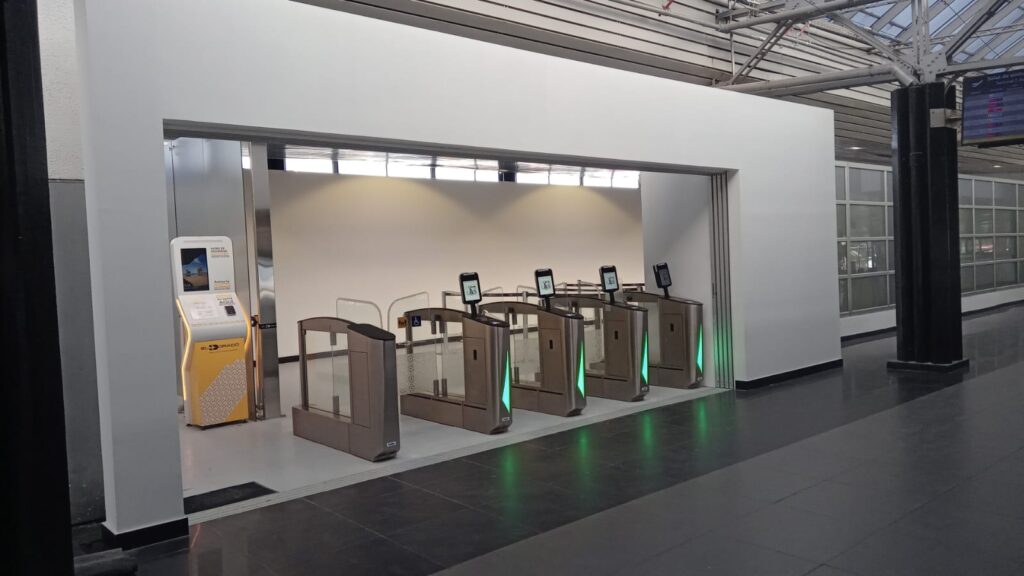The Veripax Passenger Access Control system at El Dorado Airport enhances security with automated corridors that scan boarding passes and use facial biometrics for seamless passenger flow.
Veripax is a passenger access control system that includes motorized corridors with boarding pass scanning and facial biometrics for passenger processing at airports. So far, it has been implemented in the security area of the international departures section at El Dorado Airport.
However, this same passenger control system can be used in boarding lounges, VIP lounges, and any process where boarding pass scanning is required.
Its initial implementation is based on document scanning, but the system is equipped with cameras, components, and all the necessary technology for facial recognition biometrics in a fly-to-gate process. In this process, once a passenger checks in via phone or at the airport, a photo is taken and converted into their token-ID. This allows them to be linked to their boarding pass and pass through all airport gates and processes—from arrival to boarding—using only their face, without the need to present any documents.
The Veripax Passenger Access Control system provides several advantages for airport operations and passenger experience:
Faster processing: Automates the passenger verification process, reducing waiting times.
Enhanced security: Uses biometric authentication to prevent identity fraud.
Seamless experience: Allows passengers to move through airport checkpoints without showing documents.
Scalability: Can be implemented in various airport areas, such as security zones, boarding gates, and VIP lounges.
How the Veripax System Works in Practice
Imagine a passenger arriving at El Dorado Airport for an international flight. They check in using their phone or at a kiosk, where a biometric photo is captured and linked to their boarding pass. From that moment, their face becomes their ticket—allowing them to pass through airport gates, security, and boarding areas without needing to present any physical documents.
This process significantly reduces congestion, making it ideal for high-traffic airports like El Dorado. Additionally, the Veripax system integrates seamlessly with airline databases, ensuring up-to-date passenger verification.
Future Expansion of Veripax Passenger Access Control
Given the system’s success, there are plans to expand Veripax Passenger Access Control to other Latin American airports. The goal is to create a fully automated, document-free travel experience, improving efficiency for airlines and security agencies.

